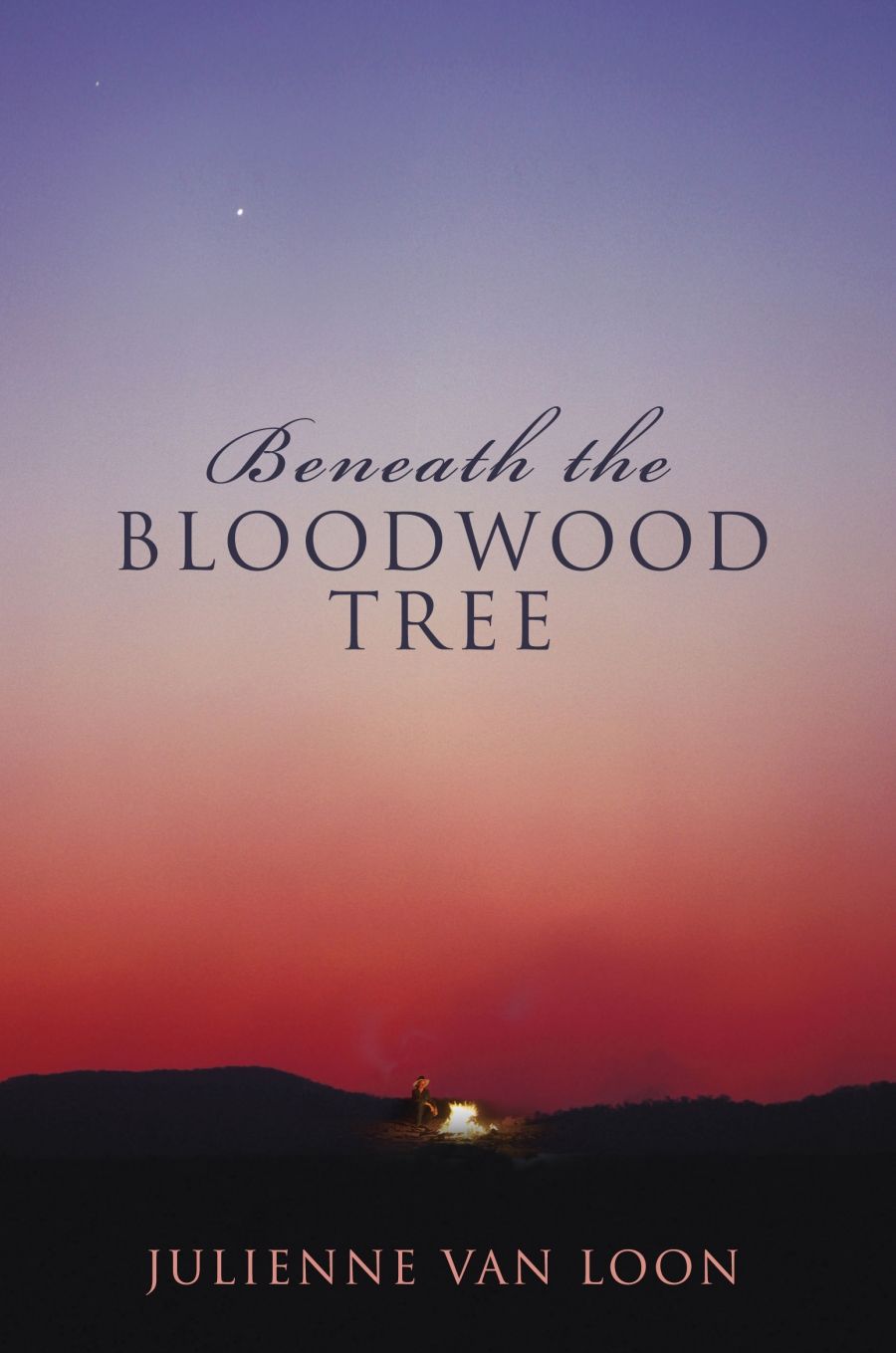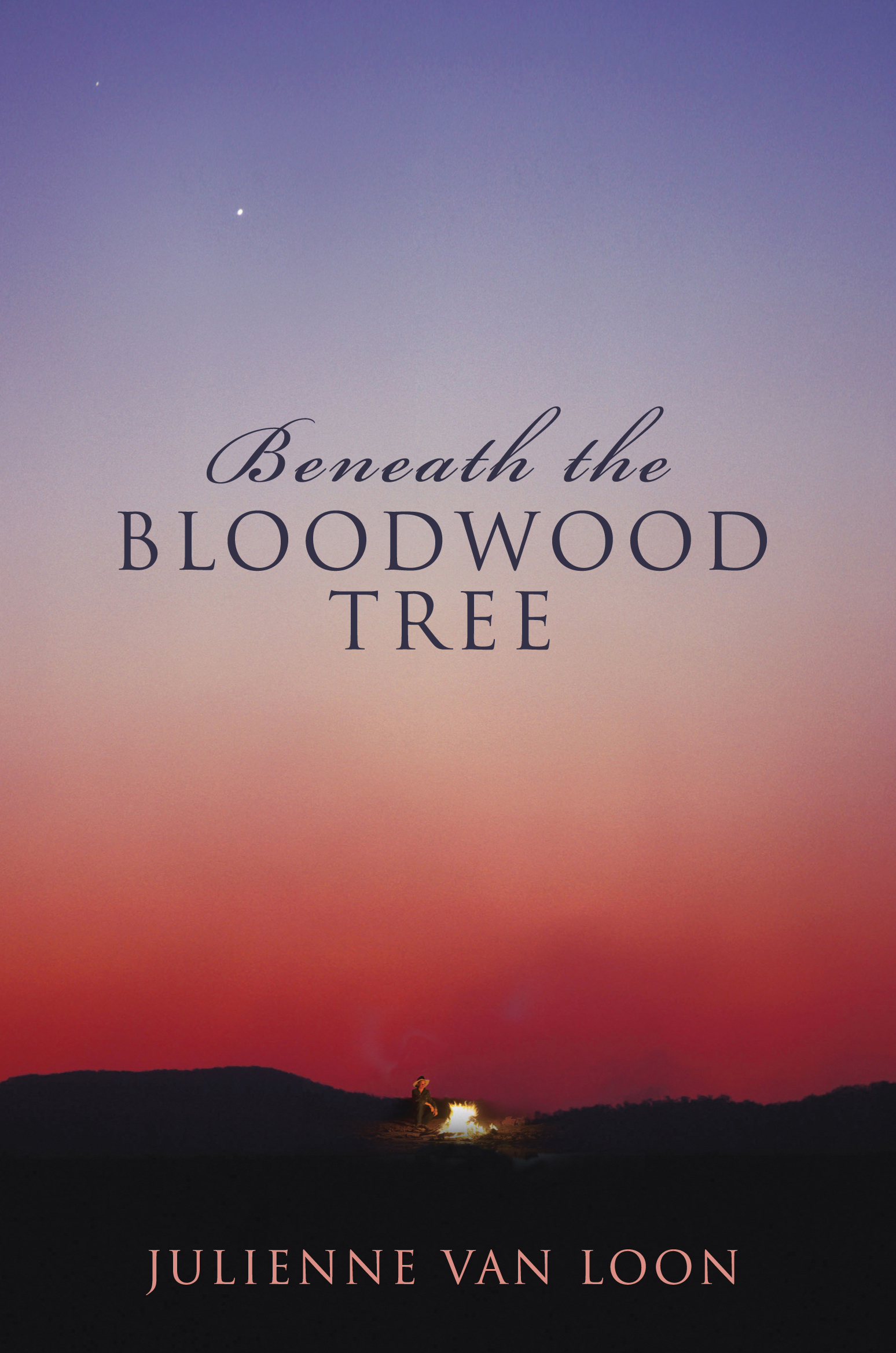
- Free Article: No
- Contents Category: Australian Fiction
- Review Article: Yes
- Article Title: Abridgment of hope
- Online Only: No
- Custom Highlight Text:
Julienne van Loon won the Vogel Literary Award for 2004 with Road Story. Now, with Beneath the Bloodwood Tree, van Loon has passed the hurdle or hoodoo of getting a second novel written and published, although not with ease, and apparently with no resolved sense of the kind of novel she was intending to write. - Book 1 Title: Beneath the Bloodwood Tree
- Book 1 Biblio: Allen & Unwin, $22.95 pb, 277 pp
- Book 1 Cover Small (400 x 600):

- Book 1 Cover (800 x 1200):

The child of an Italian father and an Asian mother, Pia feels that Port Hedland suits her own convoluted national and cultural heritage, for here can be found a ‘motley combination of Aborigine, Afghani, Anglo-Aussie, Christmas Islander, Kiwi, Croatian, Filippino and Western European’. Because this is the site of her early years, Pia does not analyse the manifold kinds of flight that are involved for so many of the town’s inhabitants. Or perhaps these have prompted a parallel reflection, to which she returns several times: ‘People disappear … It’s simply what some people do.’ And in this continent of unmarked graves, some have disappearance thrust upon them.
In the prologue, Pia, accompanied by her useful Dobermann, finds $853 in old banknotes, a Rolex watch, soiled clothes. At first, she thinks that these might belong to an Aboriginal drinking camp, the sort ‘littered with cans and the bright silver bladders of wine casks, sometimes a dozing body’. But this discovery is more sinister and mysterious. Its explanation is teased out through much of the rest of the book.
The remaining members of the small cast of Beneath the Bloodwood Tree are briskly introduced. After assisting in the euthanasia of his mother, wracked with cancer in Holland, Joachim Kalma has relinquished a possible career as a professional bike rider to take up a position as a remote area nurse. In the local hospital, Kanji House, one of those for whom he cares is Maureen Barnes, who is dying of lung cancer and curdled with resentment at her faithless husband. The gossip of the town folk has it that Dick Barnes has ‘run off with a Balinese prostitute’. However, Maureen Barnes harbours a ‘familiar daydream, a perfectly impossible scenario’, in which she imagines, or remembers, her revenge on him.
Before and after Joachim becomes Pia’s latest lover, she has had a weekly entanglement with the Croatian helicopter pilot Darko. She is one of those, she judges herself, who ‘wants both too much and too little’. Very late, she gets around to wondering ‘precisely who Darko might be’. While she wants to believe in what they have in common – ‘both are cynical, frustrated, the children of divorcees’ – Pia has blinded herself to his deep hatred of women. This dark element of Australian masculinity – whose wheedling, resentment, violence, van Loon graphically depicts – is only intensified by the lack of restraints to its expression in such a setting as Port Hedland.
Here the people are stunted by the vastness of the industrial enterprise that they serve (and which brought Pia’s father to Port Hedland to work in the mines in the first place). Long minutes pass at the railway crossing as ore-bearing train carriages, sometimes 540 of them at a time, rumble by towards the port. And there, when ‘an ore carrier exits north through the mouth of the narrow harbour … The great sea vessel dwarfs the dust-stained shopfronts.’ This is a realm of labour and wealth whose scale mocks and confounds the human, with predictable and destructive consequences, to which the locals at least have become inured.
Certainly, Pia seems to have developed a carapace so thick that only physical assault can breach it. She is capable of superstition, under the tutelage of her Chinese grandmother, for whom ghosts are everywhere, even if most lack the empathy to see them. Yet connection with others is much harder, and the ending of the novel is aptly unresolved. So, less happily, are strands of the plot. The murder mystery with which it opens is readily worked out before the solution is announced. Only Joachim is given a complicated inward life, but the Pilbara soon numbs his sensibilities. There are aspects of the potboiler in the brutal sexual melodrama played out in Pia’s life. The novel’s focus keeps shifting. A further edit would profitably have tautened Beneath the Bloodwood Tree.
Nevertheless, in its pervasive bleakness, the abridgment of hope for any contented future, the suppression of cerebral and emotional life for fear of becoming vulnerable, van Loon’s novel is faithful to the essential spirit of Australia – to its abiding nihilism. The carking call of a crow ends Xavier Herbert’s great saga cum melodrama of northern Australia, Capricornia (1938). On its much smaller scale, van Loon’s book is a vibrant, telling echo.


Comments powered by CComment